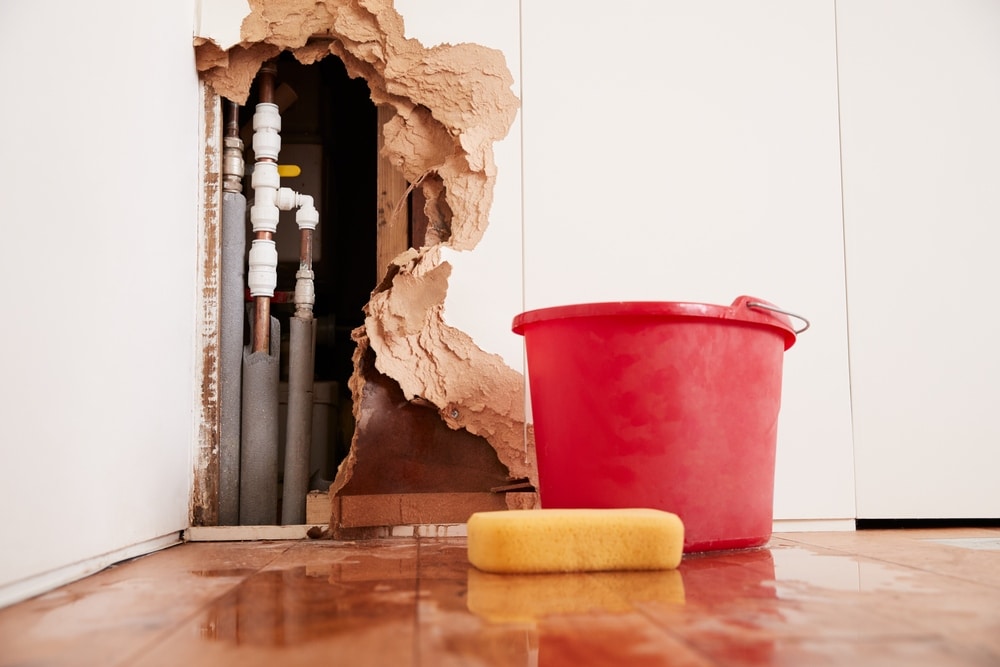Signs of a Burst Pipe: How to Identify and Address the Issue Before It Escalates
Signs of a Burst Pipe: How to Identify and Address the Issue Before It Escalates
Blog Article
Preventing Burst Pipeline: Crucial Tips to Protect Your Plumbing
Preventing burst pipelines is a critical worry for homeowners, particularly throughout colder months when the risk of cold is increased. Executing strategic actions such as appropriate insulation, routine inspections, and preserving consistent interior temperatures can dramatically minimize the possibility of pipeline failure.
Understand Pipeline Vulnerabilities
Comprehending pipe susceptabilities is vital for effective plumbing upkeep and stopping costly damages. Several elements add to the susceptibility of pipelines to bursts, consisting of material make-up, age, and environmental problems. Older pipes, especially those made from galvanized steel or polybutylene, typically weaken gradually, resulting in enhanced threat of leaks and tears.
Temperature level fluctuations can additionally considerably influence pipe integrity. In colder environments, water caught in pipelines can ice up, putting in and expanding pressure on the pipe wall surfaces, which might eventually bring about a ruptured. In addition, high water stress can strain pipes, particularly at bends and joints, heightening the possibility of failing.

Insulate Piping Properly
Proper insulation of pipes is crucial for avoiding freezing and subsequent bursts throughout chilly weather condition (burst pipe). Protecting your plumbing system efficiently safeguards against temperature level goes down that can bring about pricey damages. Begin by identifying prone areas where pipes are subjected to exterior temperature levels, such as cellars, attics, and outside wall surfaces
Use foam pipe insulation sleeves or wrap insulation tape around these areas to supply a protective obstacle. Ensure that all areas of the pipelines, particularly those with restricted heat exposure, receive appropriate insulation. Pay unique attention to joints and fittings, as these are extra prone to freezing.
When shielding, it's important to select materials that fulfill regional building ordinance and are appropriate for the details atmosphere. Fiberglass insulation is typically recommended for its thermal resistance properties. In addition, think about utilizing warmth cords or tape in extreme problems, which can be plugged in to give additional warmth
Routinely check insulated pipes for any kind of signs of wear or damages, as endangered insulation can decrease its effectiveness. By taking these aggressive procedures, you considerably lower the danger of pipeline ruptureds, guaranteeing a reputable pipes system throughout the cold weather.
Maintain Consistent Temperature
A steady interior temperature level is necessary for preventing ruptured pipes during the frigid months. When temperature levels drop, water within pipelines can ice up, developing and expanding pressure that may ultimately create the pipes to burst.Utilizing a programmable thermostat can assist handle interior temperature levels properly, making sure that spaces with plumbing continue to be cozy also when the residence is empty.
This small circulation of water can avoid freezing by easing stress within the pipes. By applying these strategies, homeowners can substantially reduce the threat of pipe ruptureds and safeguard their pipes systems versus the extreme winter season components.
Consistently Inspect Pipes
Regular evaluations of pipes systems are essential for stopping ruptured pipes and preserving general home honesty. During these inspections, it is vital to take a look at visible pipes for indicators of deterioration, leaks, or wear.
Additionally, evaluating connections and joints is important, as these points are typically vulnerable to leakages. House owners ought to additionally examine water stress levels, as too much pressure can stress the plumbing system and enhance the threat of pipeline bursts.
Take into consideration organizing professional plumbing evaluations at the very least once a year, especially prior to winter months, to guarantee your system is prepared for chillier temperatures. By being aggressive in your method, you can guard your home versus the turbulent and pricey repercussions of burst pipes.
Know Emergency Procedures
Comprehending emergency treatments is crucial for every homeowner, especially after performing normal plumbing assessments. Being gotten ready for a pipes emergency situation can substantially alleviate damage and conserve prices. Find your major water shut-off valve; it is typically located near the water meter or where the main line enters your home. Familiarize on your own with its procedure, as closing off the water rapidly can protect against comprehensive flooding.
Following, maintain essential devices handy. A plumbing emergency kit ought to include a wrench, bettor, and towels, along with a flashlight and a container for tiny leakages. In addition, think about having the contact info for a relied on plumbing readily offered, must the circumstance rise beyond your control.
If you find a leak or ruptured pipe, instantly switch off visit site the water and notify your plumber. Document the damages with photos for insurance functions. Understand the indicators of possible plumbing concerns, my blog such as unusual water stress variations or damp areas on walls
Inevitably, positive knowledge and quick action are critical in managing plumbing emergency situations, ensuring your home stays safeguarded and minimizing prospective damages.

Conclusion
Finally, protecting against ruptured pipelines requires a diverse technique that includes understanding pipeline susceptabilities, correct insulation, keeping consistent interior temperatures, normal assessments, and understanding of emergency procedures. By implementing these essential techniques, the danger of pipes failures can be significantly lowered, thereby making certain the durability and performance of the plumbing system. Positive measures not only protect versus potential damage yet also add to general water conservation and the defense of residential property.
In cooler environments, water trapped in pipes can ice up, increasing and exerting pressure on the pipe wall surfaces, which may inevitably lead to a burst. When temperatures drop, water within pipelines can freeze, producing and expanding stress that might inevitably create the pipelines to burst. By pop over here carrying out these methods, homeowners can considerably minimize the risk of pipeline ruptureds and protect their pipes systems versus the extreme winter months elements.

Report this page